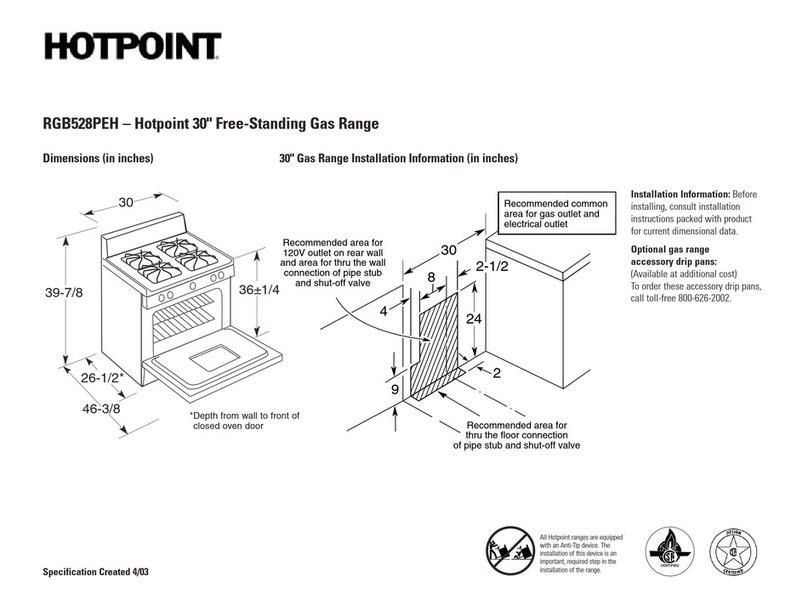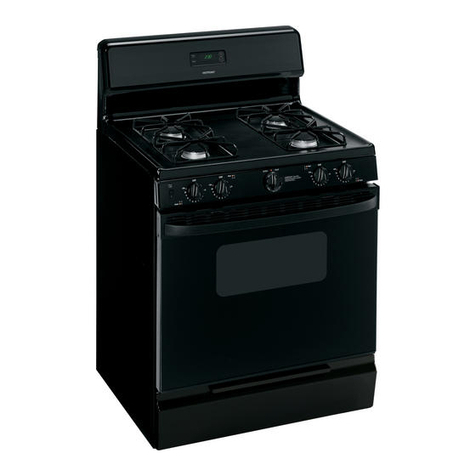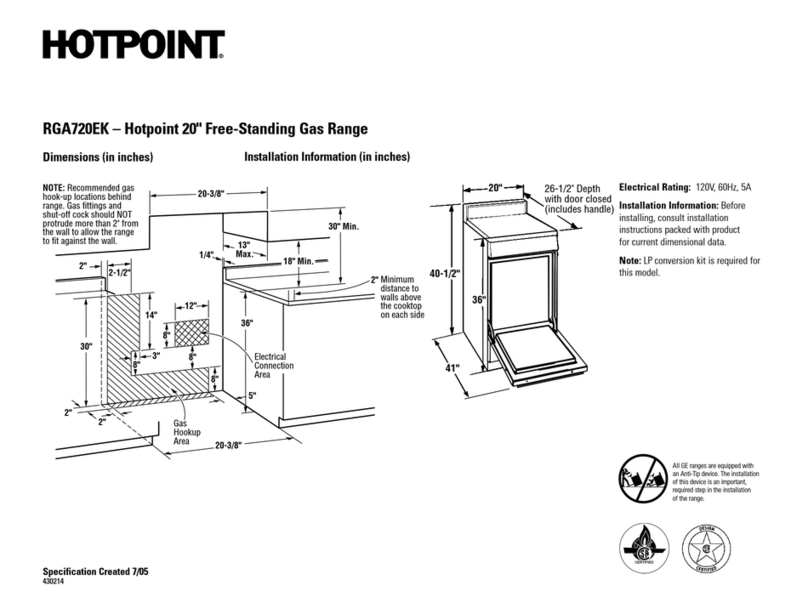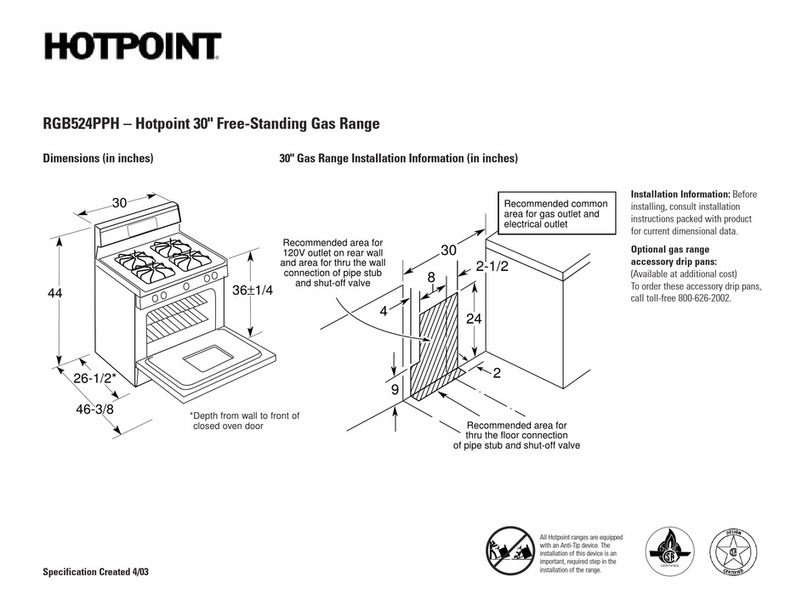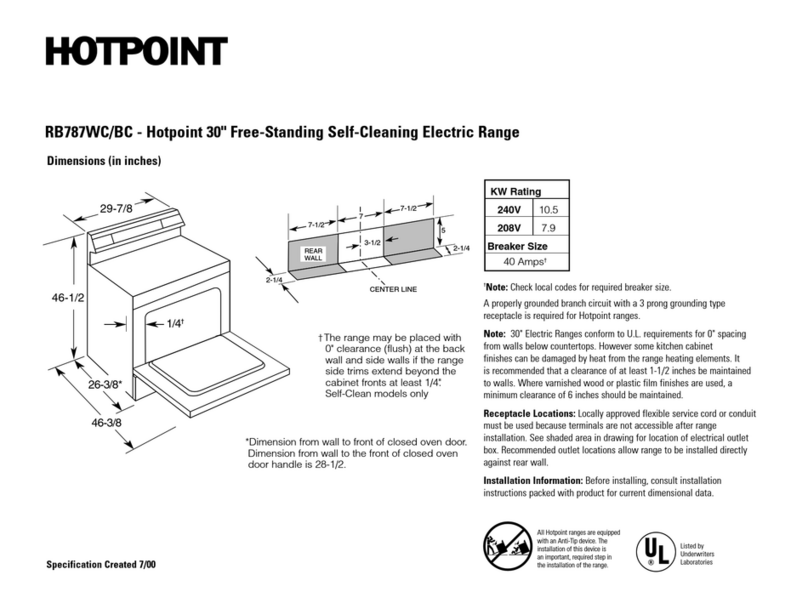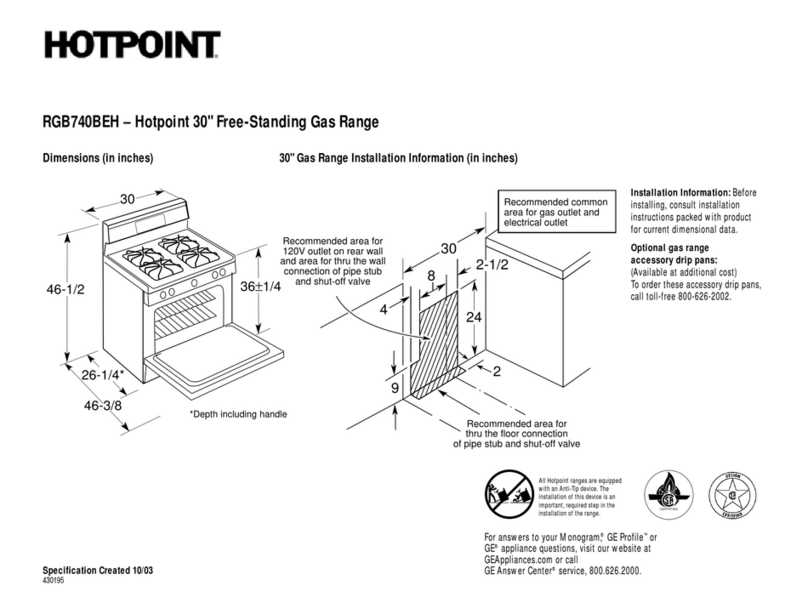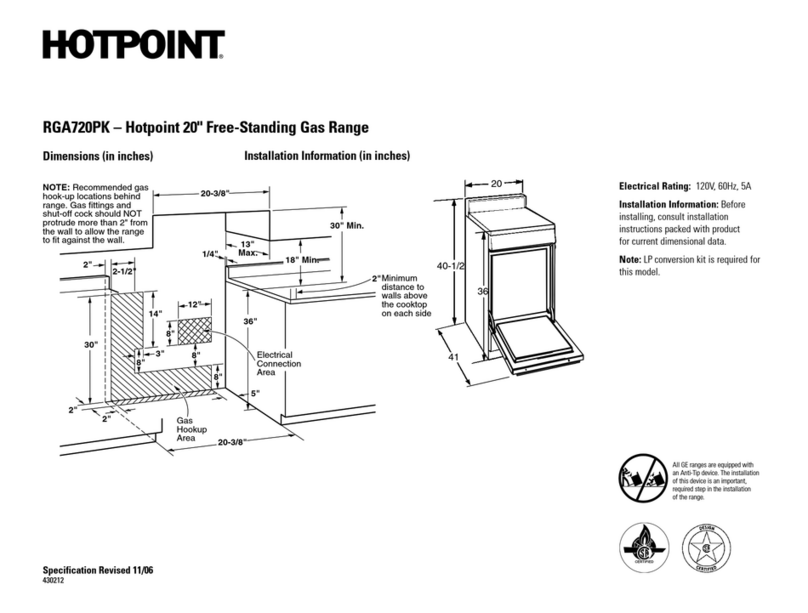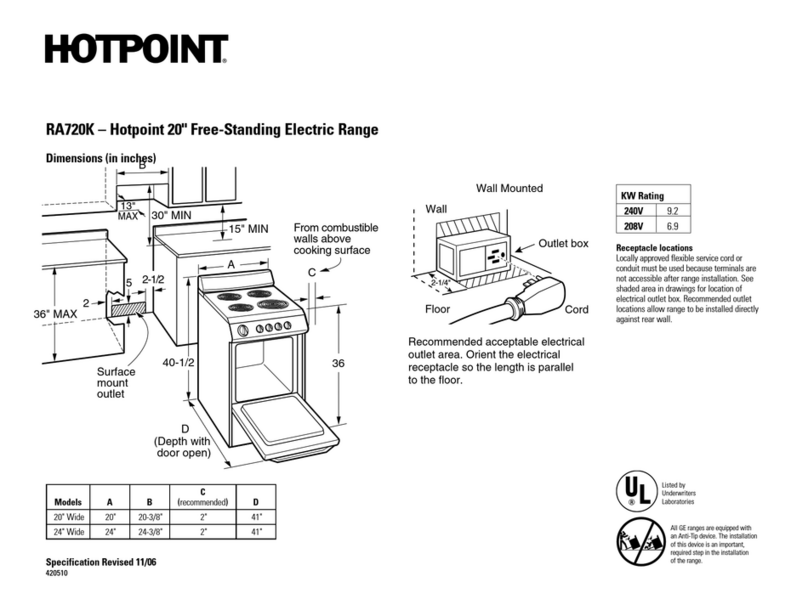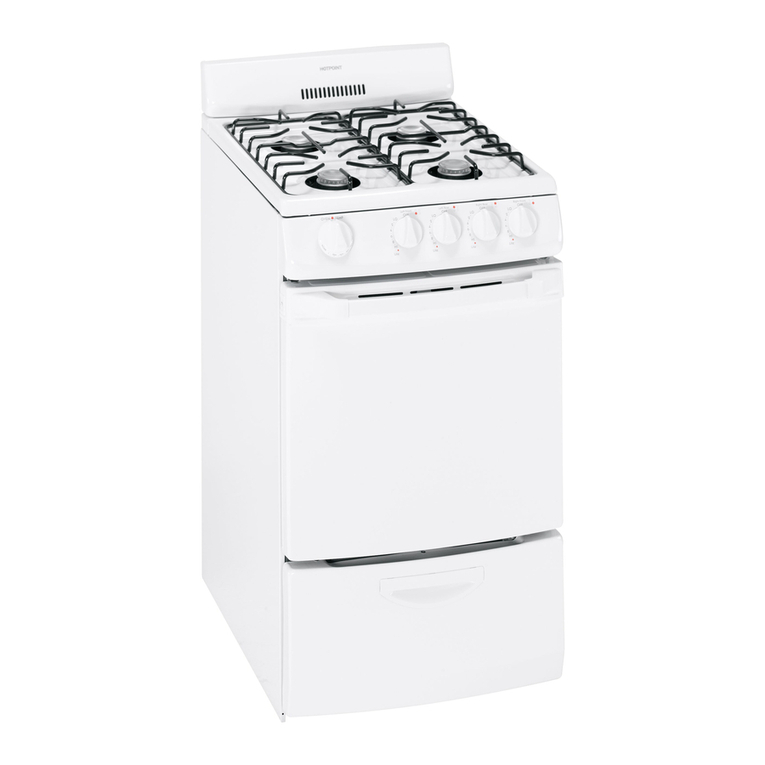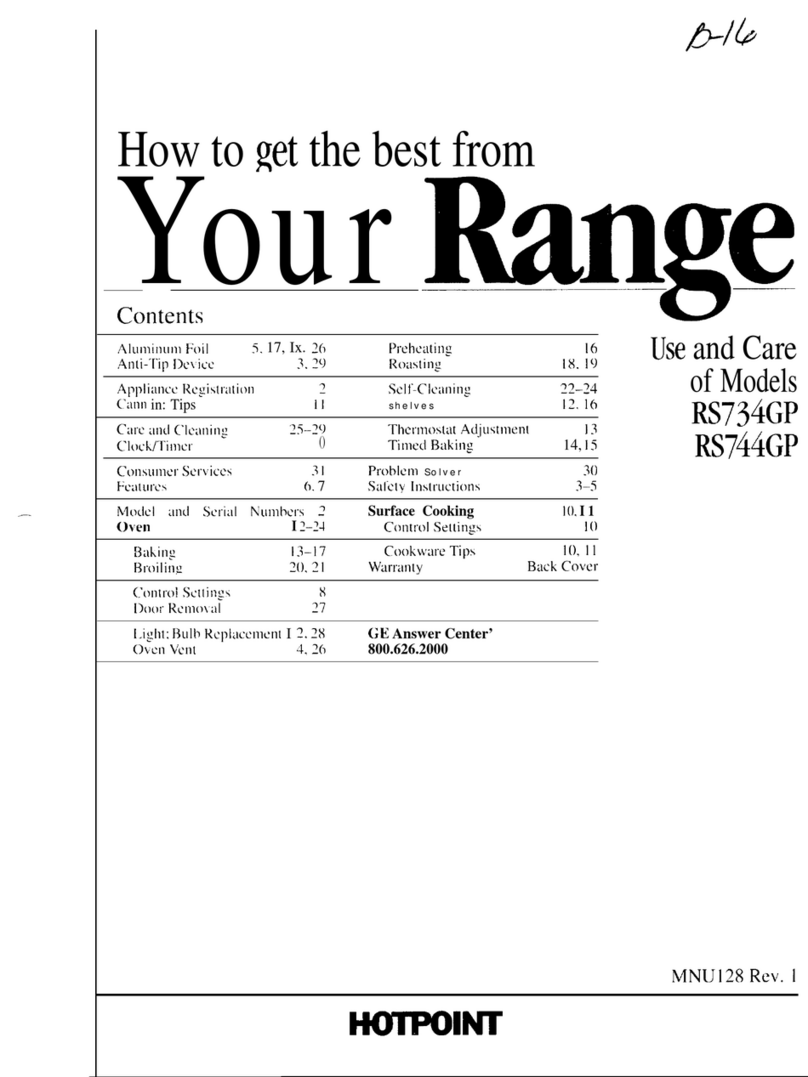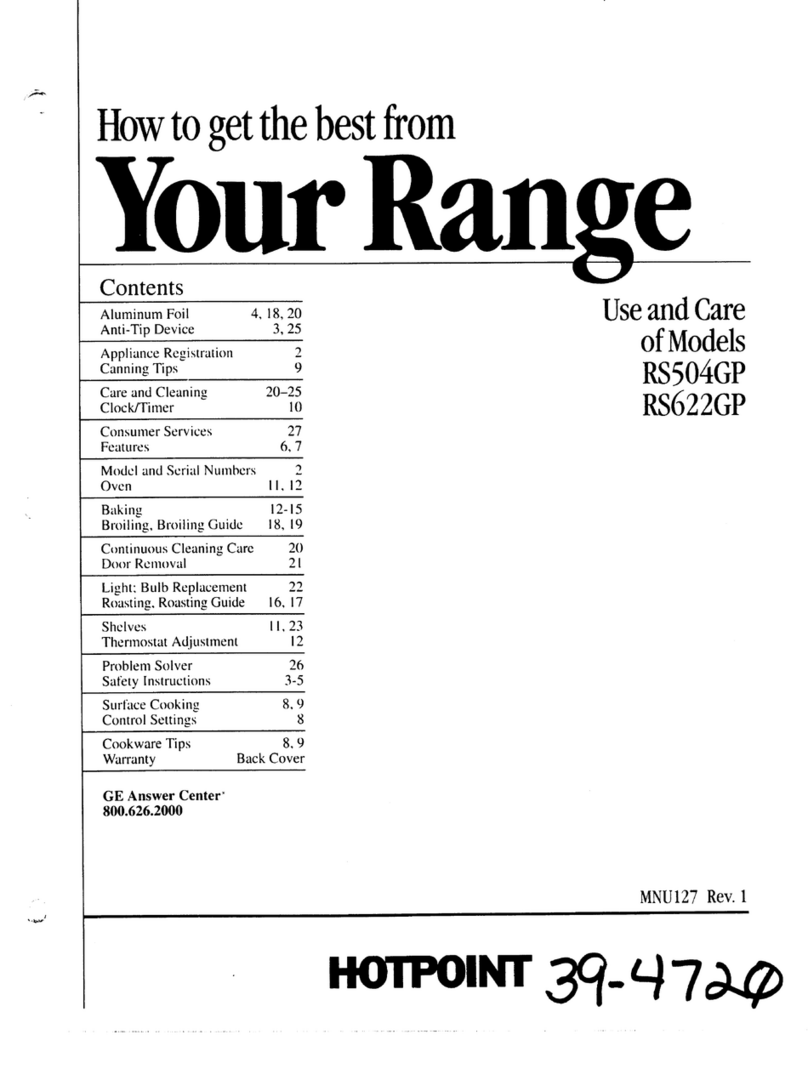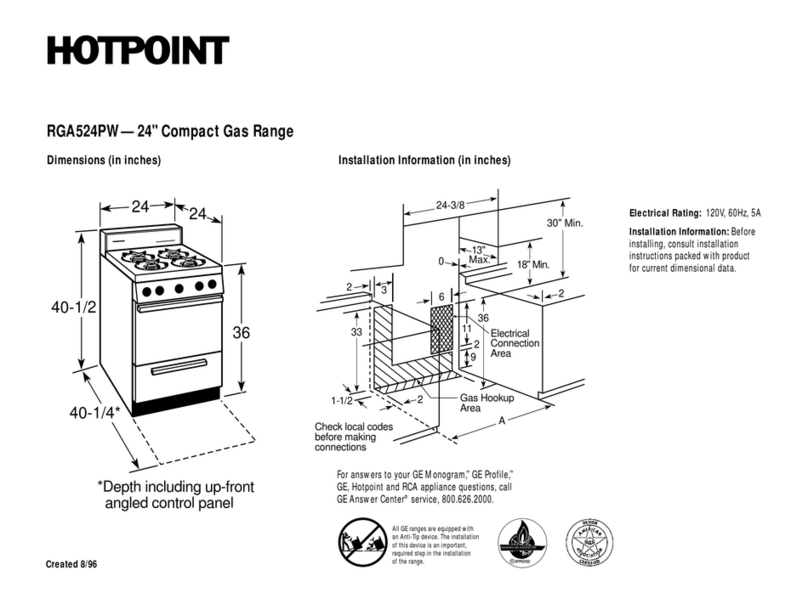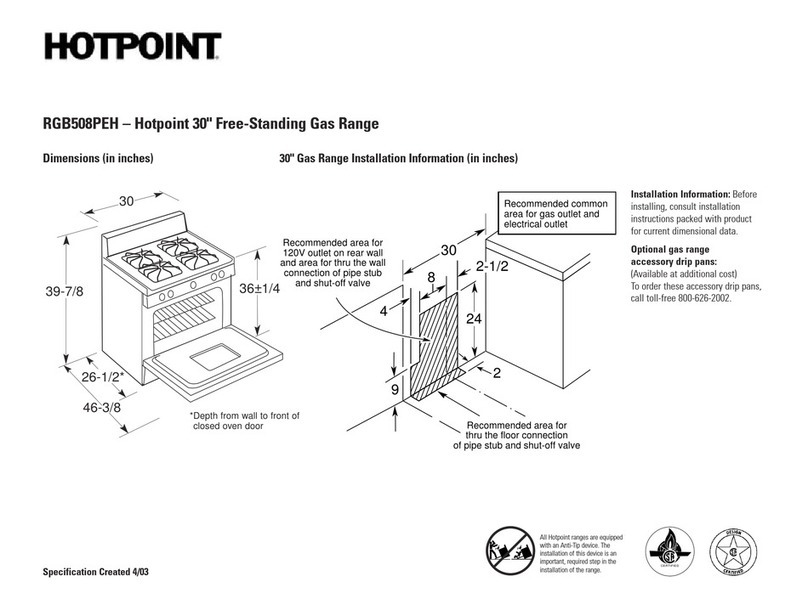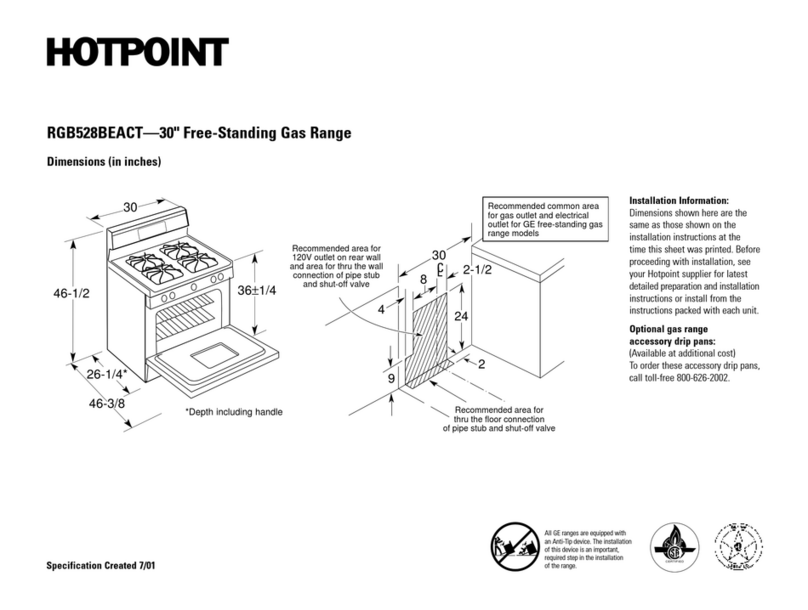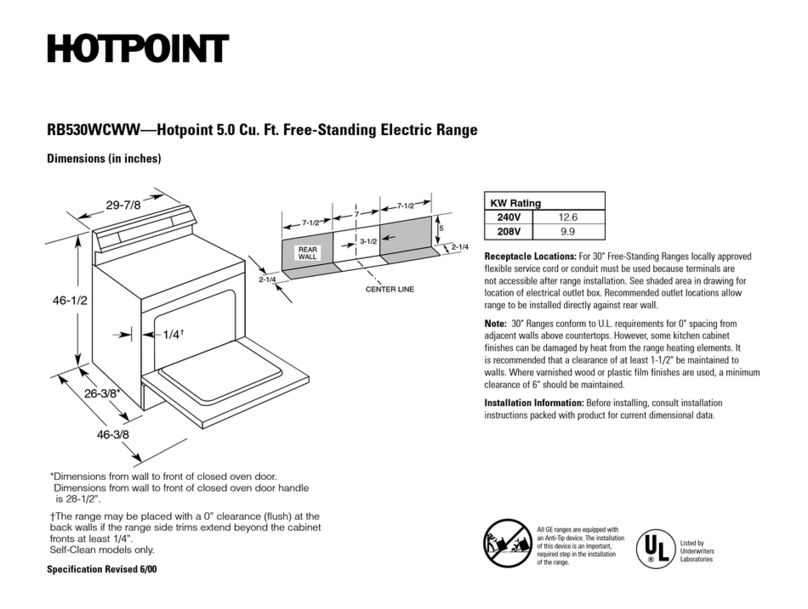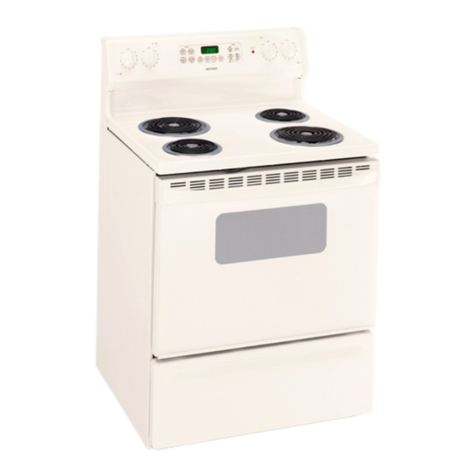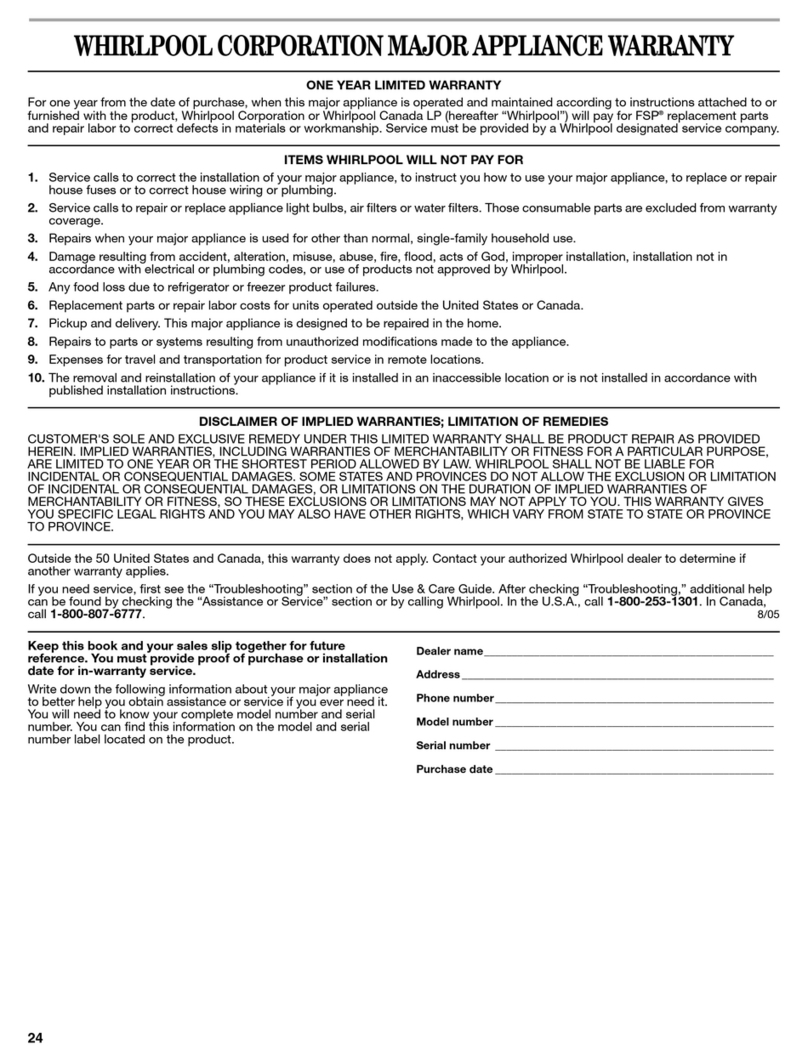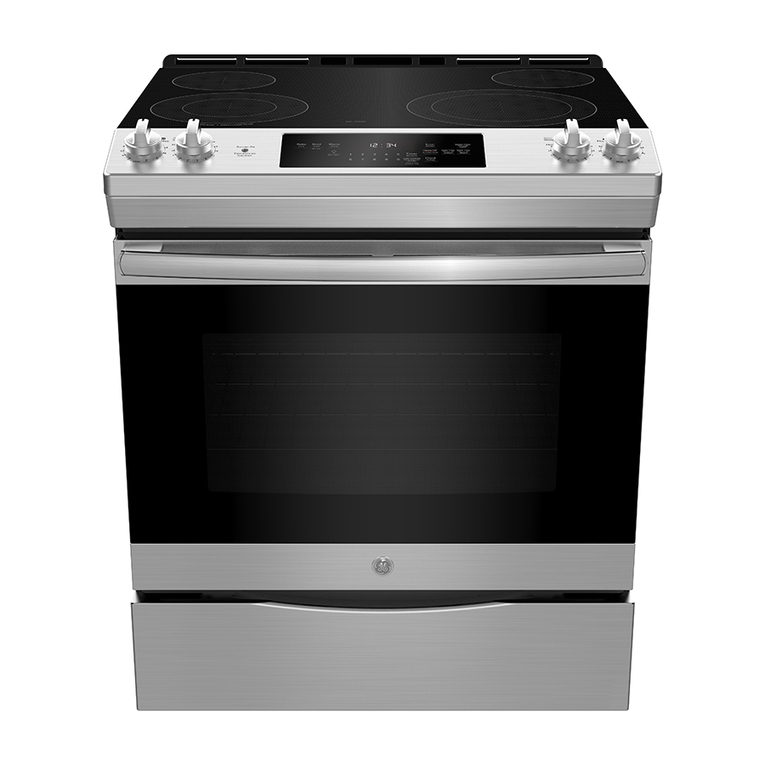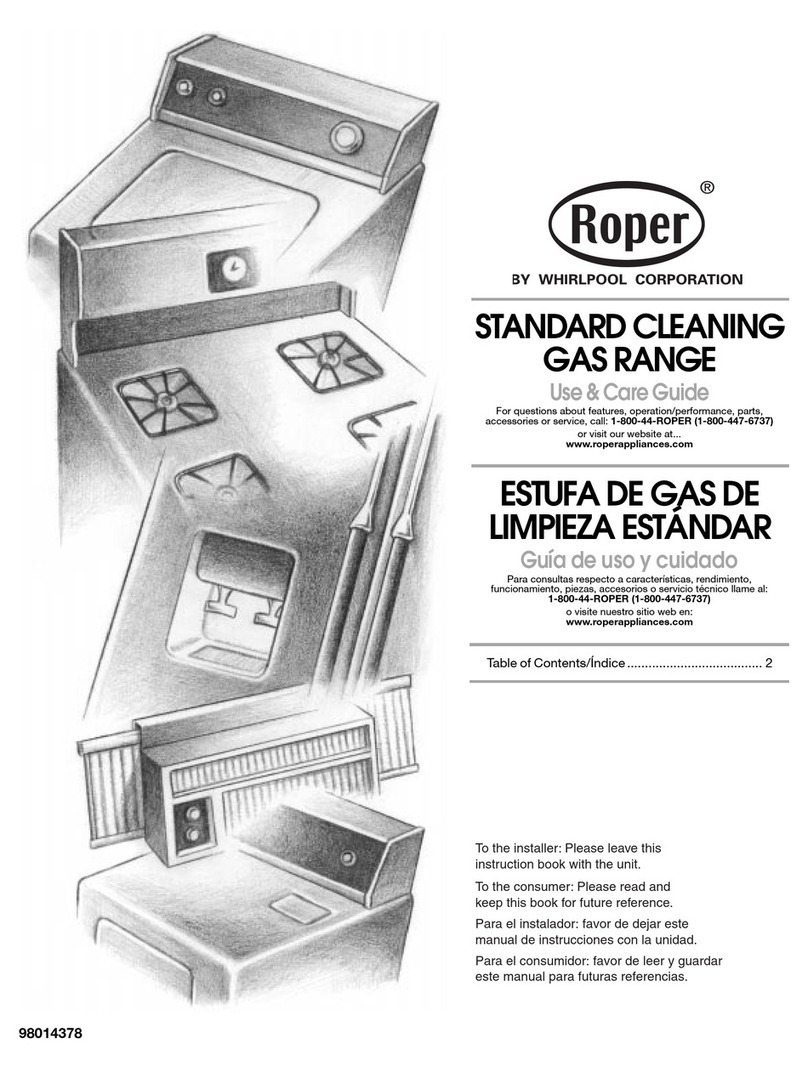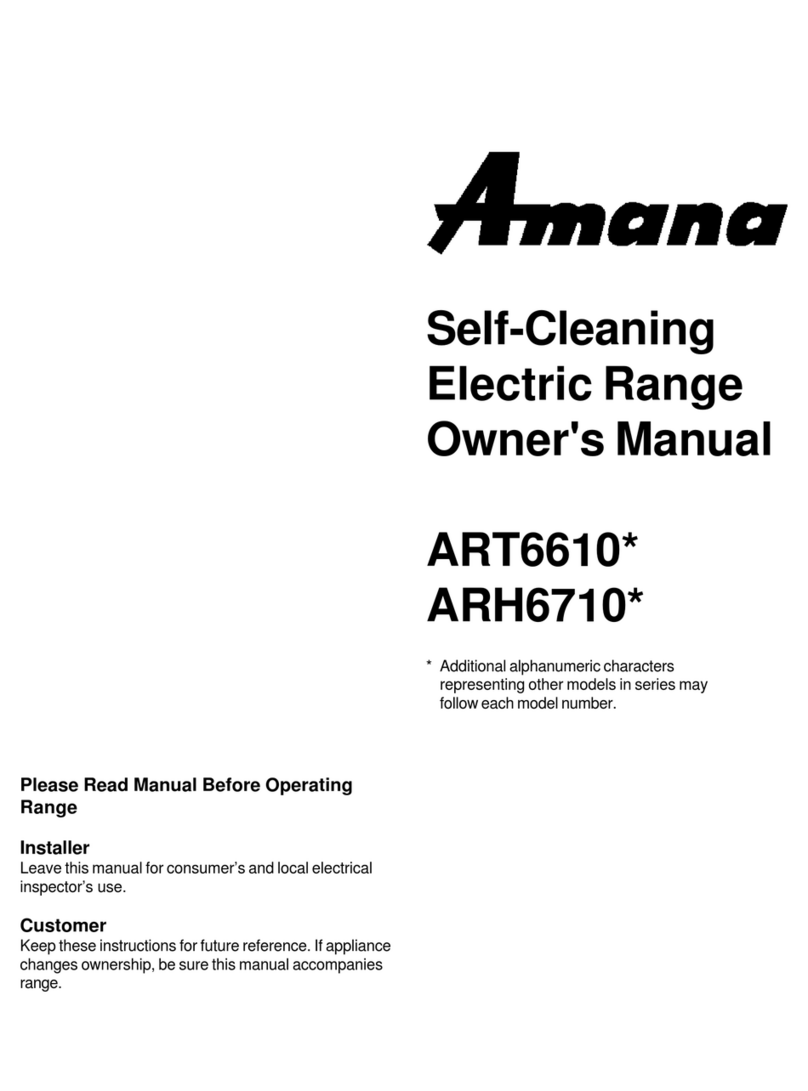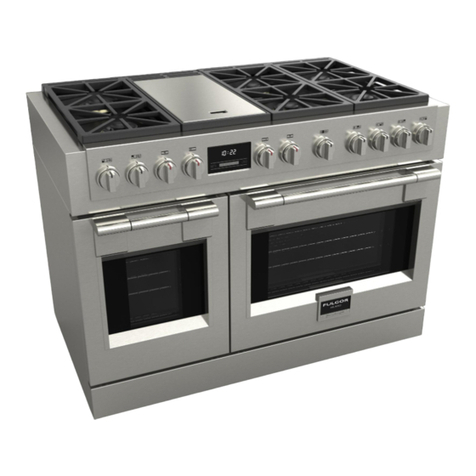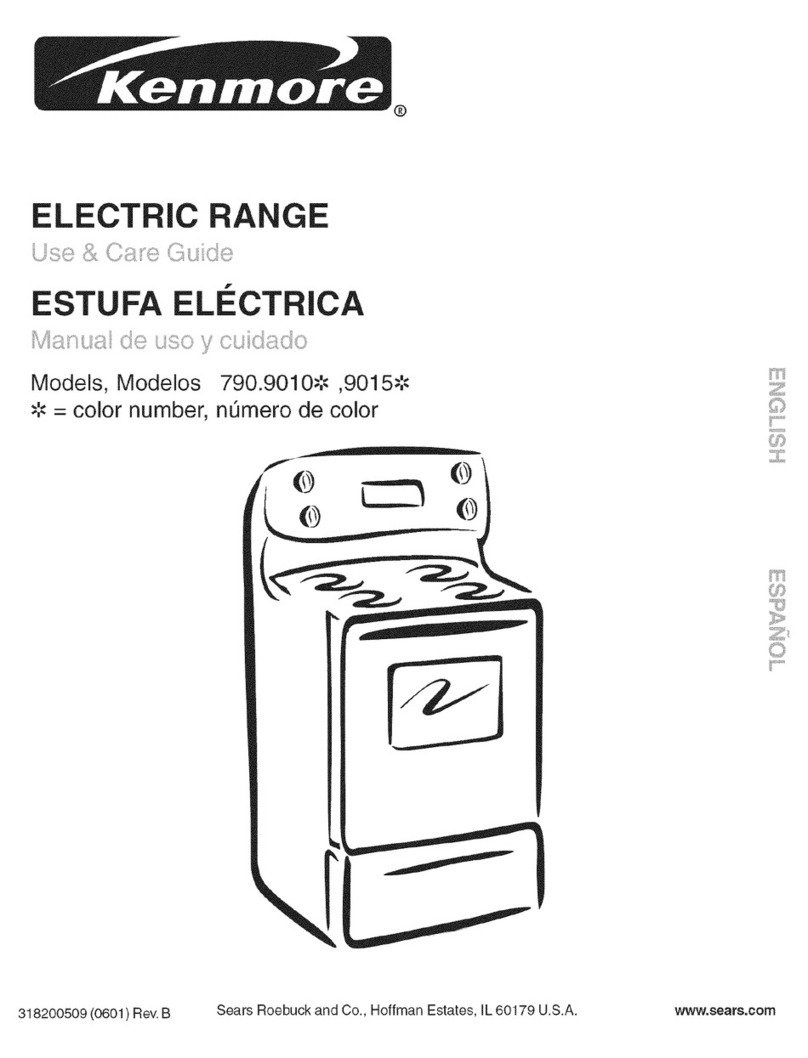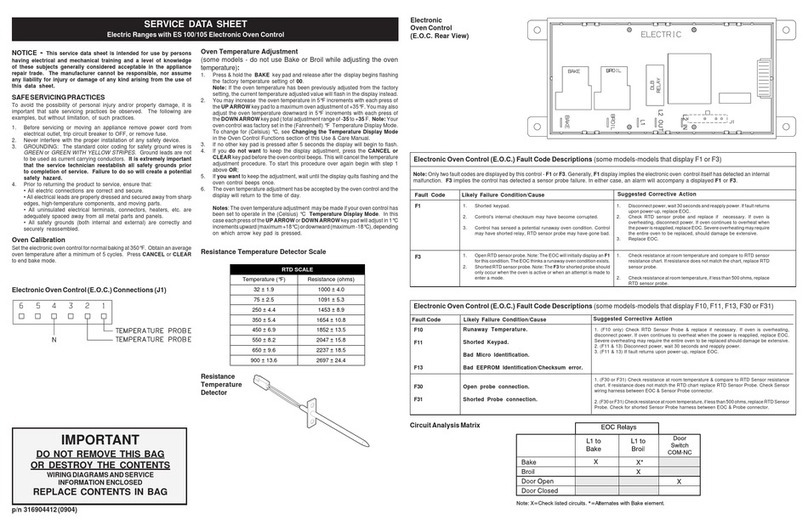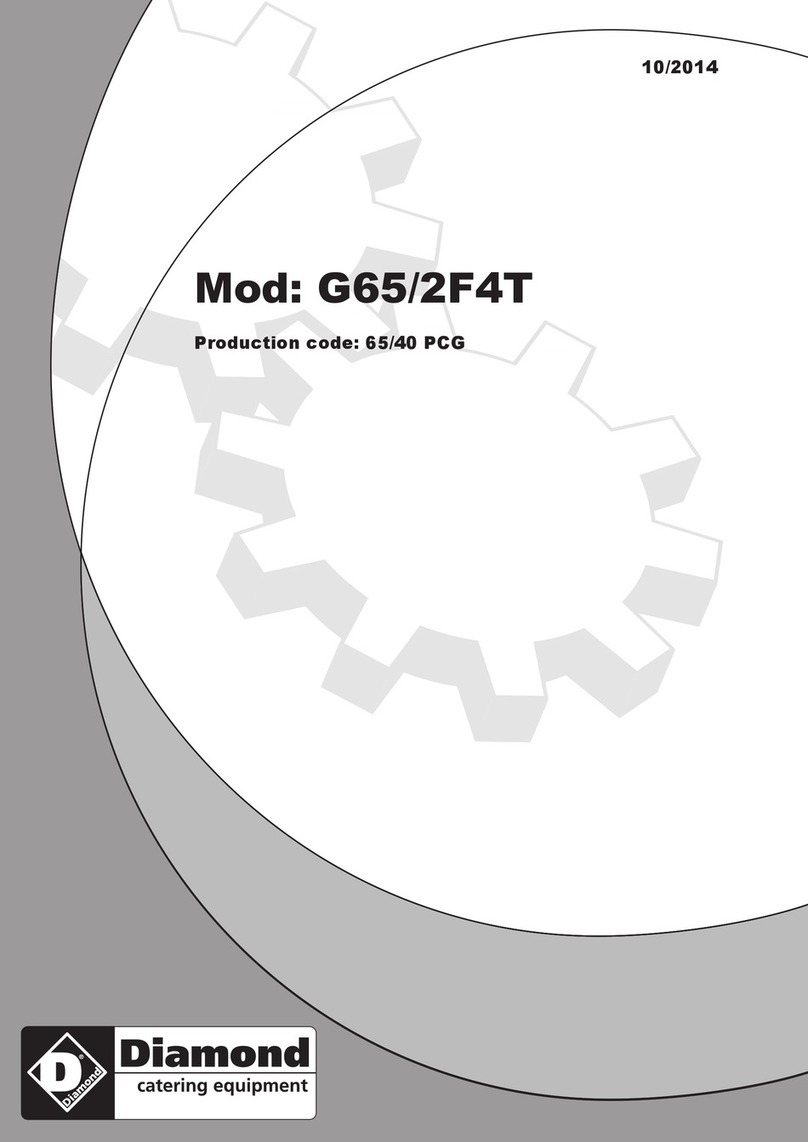. .
~+Jesh foods can cause hot fat
(3
“~~-’ bubble up and over sides
of pan,
@Use least possible amount
of fat for effective shallow or
deep-fat frying. Filling the pan
too full of fat can cause spili-
overs when food is added.
@If acombination of oils or
fats will be used in frying, stir
together before heating, or as
fats melt slowly.
@Always beat fat slowfy, and
watch as it heats.
=Use deep fat thermometer
whenever possible to prevent
over-heating fat beyond the
smoking point.
@Use Proper Pan Size—Avoid
pans that are unstable or easily
tipped. Select utensils having
flat bottoms large enough to
-ap!!,~e,~~-containfood i3VoidillCJ
w~uiluvers and spillovers, but
large enough to ccver burner
ate. This will both save
aning and prevent hazard-
ous accumulations of food,
since heavy spattering or spill-
overs left on range can ignite.
Use pans with handles that can
be easily grasped and remain
cool.
~Use only glass cookware that
is recommended for use on gas
cooktops or gas ovens.
@Keep all plastics away from
top burners.
QTo avOid the possibility of a
19umalways be certain that the
controls for all burners are at
OFFposition and ‘al!grates
are etxcdbefore attempting to
remove the grate”
@~f!-$enffamhlg foods under
the hood, turn ‘the fan C9ff.The
%3nyif QpeFaiingJ may spread
--lthe “flame.
\./
,
..
..-.-.,
1
.,
,
-.-,
@If range is located near a
window, do not use long cur-
tains which could blow over
the top burners and create
afire hazard.
~When apilot goes out, you
will detect afaint odor of gas
as your signal to relight pilot.
When relighting pilot, make
sure burner controls are in
“OFF” position and follow
instructions described on fol-
lowing pages to relight.
~If you smell gas and you
have already made sure pilots
are lit, turn off the gas to the
range and call aqualified ser-
vice technician. Never use an
open flame to locate aleak.
. . . . ~Rt.mmNJE3amg9 Ph’cm’%gan%
@Do not use oven for astorage
area.
~stand away from the range
::x:::::::i:::::;:s
can cause burns to hands, face
and/or eyes.
@Keep oven free from grease
build up.
~Place oven rack in desired
position while oven is cool.
@Pulling out shelf to the shelf
stop is aconvenience in lifting
heavy foods. It is also apre-
caution against burns from
touching hot surfaces of the
door or oven walls.
~Don’t heat unopened fm.3d
Cx3ntaine$’sin the oven. Pres-
sure could build up and the
container could burst causing
an injury.
@When using cooking or
roasting bags in oven, follow
the manufacturer’s directions.
~when CXX)kingpork> follow
our directions exactly and
always cook the meat to at
least 170°. This assures that,
in the remote possibility that
trichina may be present in the
meat, it will be killed and meat
will be safe to eat.
@Always remove broiler pan
from broiler compartment as
soon as you finish broiling.
Grease left in the pan can
catch fire if oven is used
without removing the grease
from the broiler pan.
@When broiling, if meat is too
close to the flame, the fat may
ignite. Trim excess fat to pre-
vent excessive flare-ups.
@Make sure broiler grill pan is
in place correctly to reduce the
possibility of grease fires.
~If you should have agrease
fire in the broiler griil pan, turn
off oven, keep drawer closed to
contain fire until it burns out.
fiikmniF?g YCNJYRange
@Clean only parts listed in
this Use and Care Book.
@Keep range clean and free
of accumulations of grease
or spillovers which may ignite.
1; jfQ~J ~q~@~q $j~{q#’~f:Q
@Read “The Problem Solver”
on page 21 of this book.
@Don’t attempt to repair Of’
replace any part of your range
unless it is specifically recom-
mended in this book. All other
servicing should be referred
to aqualified technician.
